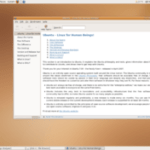The stable release of LXD, the system container and VM manager, is now available. LXD 5.0 is the fourth LTS release for LXD, and will be supported for 5 years, until June 2027. LXD 5.0 comes preinstalled with Ubuntu Server 22.04 LTS released last week,
What’s new in LXD 5.0?
LXD 5.0 LTS comes with a variety of great improvements whether it’s running containers and VMs on a laptop or a variety of projects across a rack full of clustered servers. It involves significant improvements in networking, projects, and cluster areas, as well as migration features. Below is an overview of some of the key features, and a detailed announcement with a complete changelog can be found here. For those interested in demos of some of the new features, you can watch the LXD 5.0 live stream or the LXD 5.0 LTS for 4.0 users videos.
Networking
LXD 5.0 brings the the biggest improvement for networking, primarily through the addition of OVN support combined with BGP, DNS, floating IP, and hardware acceleration support. OVN is an open source virtual network system deeply integrated with the Linux kernel via the Open vSwitch, adding native support for virtual network abstractions. This opens up a variety of networking features for LXD users, such as having networks within projects, which helps avoid conflicts when multiple users are using the same LXD server. It also provides improved speed through network acceleration and peering. To improve security, LXD networking features now include ACL (Access Control List) – a function driving firewall rules enabling restriction of both incoming and outgoing (ingress and egress) traffic.
Clusters
For cluster users, it is now possible to perform easy maintenance through cluster evacuation. In addition, it is now possible to group servers for easier targeting and restricting projects to a specific group of servers. LXD 5.0 also includes support for metrics APIs that can be used with Prometheus and Grafana to get detailed instance metrics across entire clusters, similar to as shown in the photo below.
Projects
Projects have also grown a number of options for additional limits and restrictions, making it easy to safely grant access to various teams and limit their resource usage. One of these features is automated projects (multi-user setup) allowing LXD to dynamically generate restricted projects on a per user basis, enabling users to safely share workstations without affecting each other’s work. For a detailed walkthrough of the multi-user feature, you can watch this video.
Virtual Machines
With this release, LXD Virtual machines are effectively at feature parity with containers. They now come with vTPM support, offering security-related functions, such as allowing users to create and store keys that are private and authenticate access to their systems. VMs also come with arbitrary PCI passthrough support that enables users to access and manage a variety of hardware devices from a virtual machine. VMs can now also be live-migrated and support some device hotplug and additional storage options.
Migration
Enterprise users will appreciate the much easier lift & shift support with the reworked migration tool (lxd-migrate). The migration tool now supports both containers and VMs, and it includes a variety of new features, especially around authentication.
We will be exploring some of these features in more detail in future blogs.
For getting started with LXD, follow the get started guide for all major Linux distributions or try it online.
Learn more about LXD on the LXD webpage.
Discover more from Ubuntu-Server.com
Subscribe to get the latest posts sent to your email.




